Porcupines are among the largest rodents on earth. They have modified hair that is sharp for defensive purposes. These hairs are known as quills. Their size is not the only attribute that is large; they also have about 30 different species all over the world.
Porcupines may not look like it, but they are gentle animals with a quiet lifestyle. Also, their quill is more than just a weapon. Do you want to read other interesting facts about porcupines? This post is what you need. Here are some incredible porcupine facts!
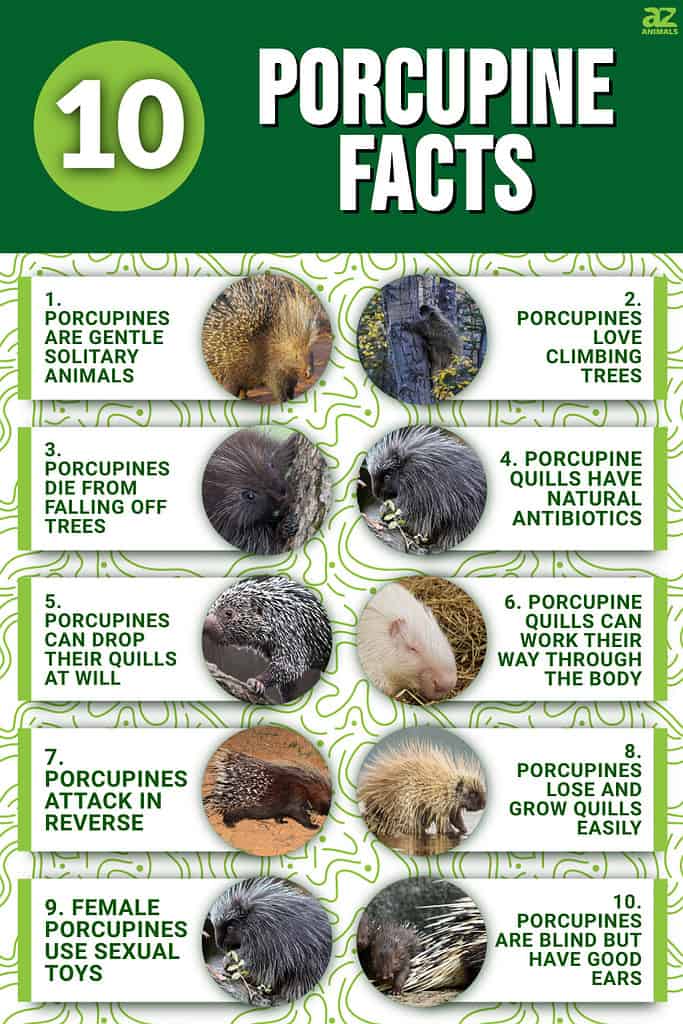
1. Porcupines are Gentle Solitary Animals
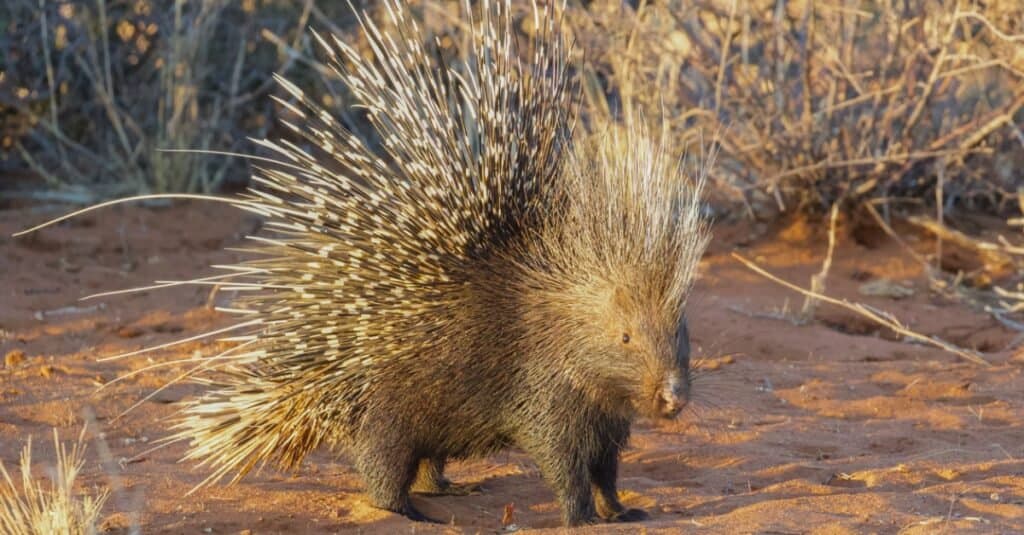
Porcupines are very gentle and would only become aggressive in the face of an attack.
©iStock.com/Pedro Ferreira do Amaral
Porcupines look like dangerous animals with numerous quills. However, these animals are very gentle and would only become aggressive in the face of an attack. One interesting fact about porcupines is that they are gentle solitary animals. They are nocturnal and tend to stay out of sight during the day.
A group of porcupines is called a prickle. However, you hardly see them in a group. They only come together in groups during winter when it is mating season. After that, each one goes back to its solitary life.
2. Porcupines Love Climbing Trees

The New World porcupines that are common to America love to climb trees.
©iStock.com/Wirestock
There are two main groups for all the species of porcupine. The first group is the Old World porcupines. The second group is the New World porcupines. There are a lot of differences when you compare these two groups. However, one difference that stands out is the New World porcupine’s love for climbing trees.
The New World porcupines that are common to America love to climb trees. They climb the trees for several reasons. One is their love for bud leaves appearing on branches’ edges. Another reason is that they climb the tree tops to rest during the day.
3. Porcupines Die From Falling Off Trees
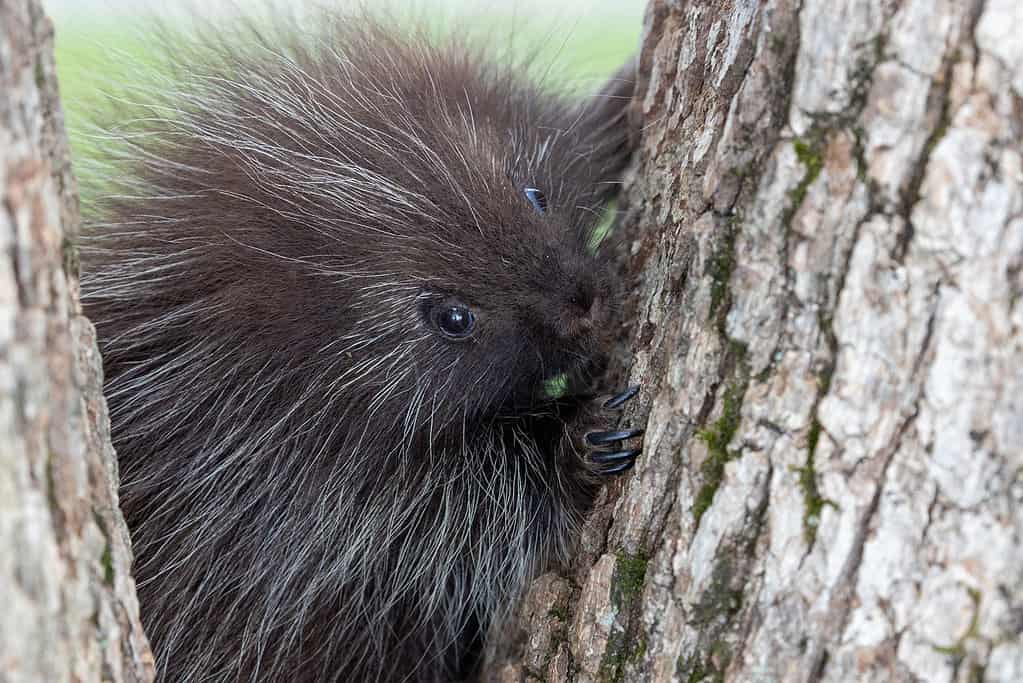
Porcupines love climbing trees, but interestingly, they are not good tree climbers.
©iStock.com/Sandra Mitchell
The new world porcupines indeed have the habit of climbing trees. It is safe to say that this habit is unhealthy. Porcupines love climbing trees, but interestingly, they are not good tree climbers. They tend to fall quite often and fracture different parts of their skeleton from falling.
In more severe cases, porcupines come to their death because of the impact of falls from climbing trees. Despite their fantastic body features, the head is a delicate part of a porcupine. A simple fall with effects on the head can mean instant death.
4. Porcupine Quills Have Natural Antibiotics
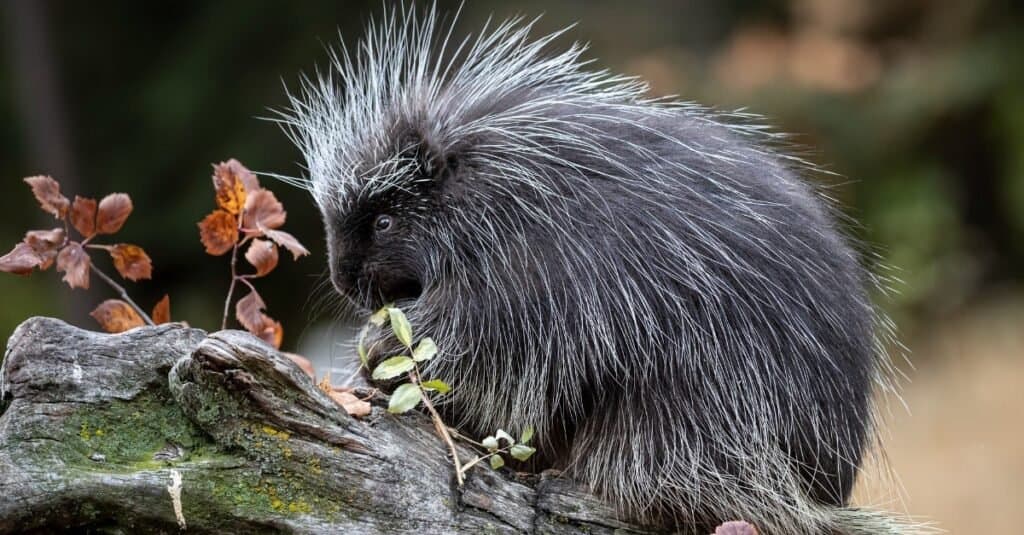
Natural antibiotics help porcupines heal when their quills injure them and also prevents any infection.
©iStock.com/Carol Gray
Porcupines love to climb trees but are poor at it, which is a known fact. During the fall, they often get injured or penetrated by their quills. But this is never a cause of death. How is that possible? The answer is truly incredible.
Porcupine quills possess natural antibiotics. It is a fantastic feat because there are few animals with such features. Natural antibiotics help them heal when their quills injure them and also prevents any infection. In essence, porcupines are safe from their quills.
5. Porcupines Can Drop Their Quills at Will
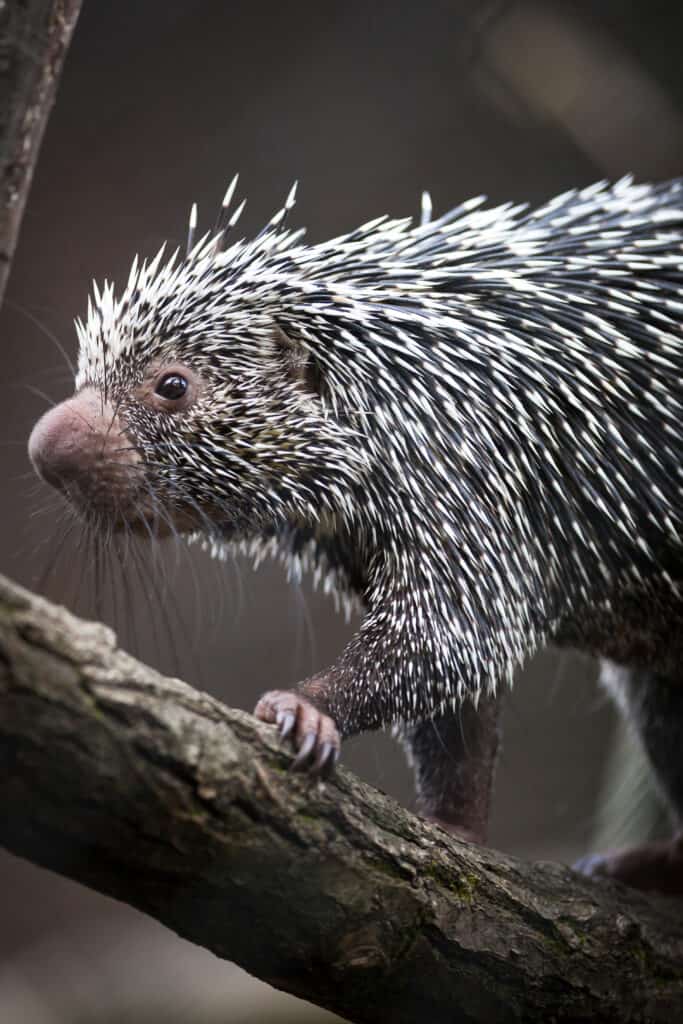
When porcupines are scared or excited, they raise their quills to appear bigger. If this doesn’t ward off predators, they drop quills willingly, hoping it will cause damage.
©l i g h t p o e t/Shutterstock.com
The quills are the main defensive feature of porcupines. A simple look at their physiology confirms this statement. However, a standard theory is that porcupines can shoot their quills at enemies. No, they cannot, but they can do something close to shooting. What is that?
Porcupines can drop their quills at will. When these gentle creatures are scared or excited, they can raise their quills and make them stand. It makes them look bigger and more dangerous. If this is not enough to ward off the predator, they drop quills willingly on its path, hoping it will cause damage.
6. Porcupine Quills Can Work Their Way Through the Body
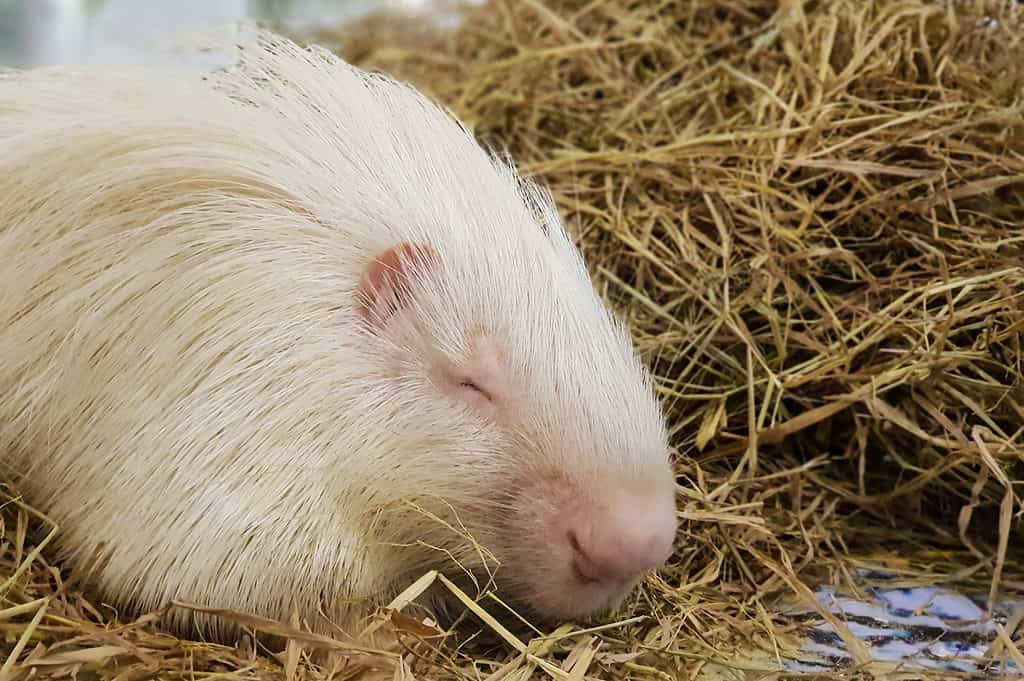
The porcupine quills are not just sharp for injury but also challenging to remove. These modified hairs can move through the body of a predator, causing pain.
©ekarin/Shutterstock.com
Porcupine quills might have borne no harm to them, but it remains dangerous and deadly to other animals. The porcupine quills are not just sharp for injury but also challenging to remove. These modified hairs can move through the body of a predator, causing pain. The pain can last weeks as the quills move through the muscle.
It is incredible to note that an animal can die long after encountering a porcupine. This death is due to the actions of the quills. One typical example is leopards that die from consuming porcupines because they fail to remove the quills properly.
7. Porcupines Attack in Reverse
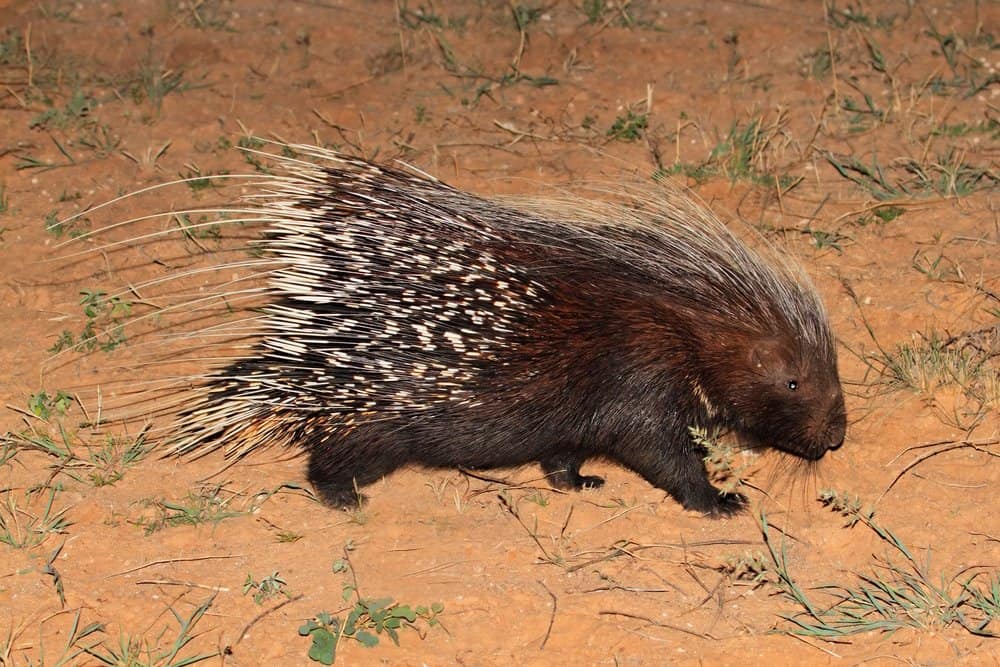
Porcupines attack in reverse because their quills point backward.
©EcoPrint/Shutterstock.com
Porcupines don’t engage much in attacks because they spend the majority of their life eating leaves and living solitary lives. However, they have an incredible way of attacking predators. This way of attack starts with the porcupine doing everything possible to ward off predators.
These rodents make sounds and stand erect to look more prominent in some cases. They also drop their quill in the path of predators to cause injuries. If this does not work, they resort to their last option, attacking in reverse because their quills point backward; porcupines attack by running in reverse. Such a funny yet incredible way of attacking predators.
8. Porcupines Lose and Grow Quills Easily
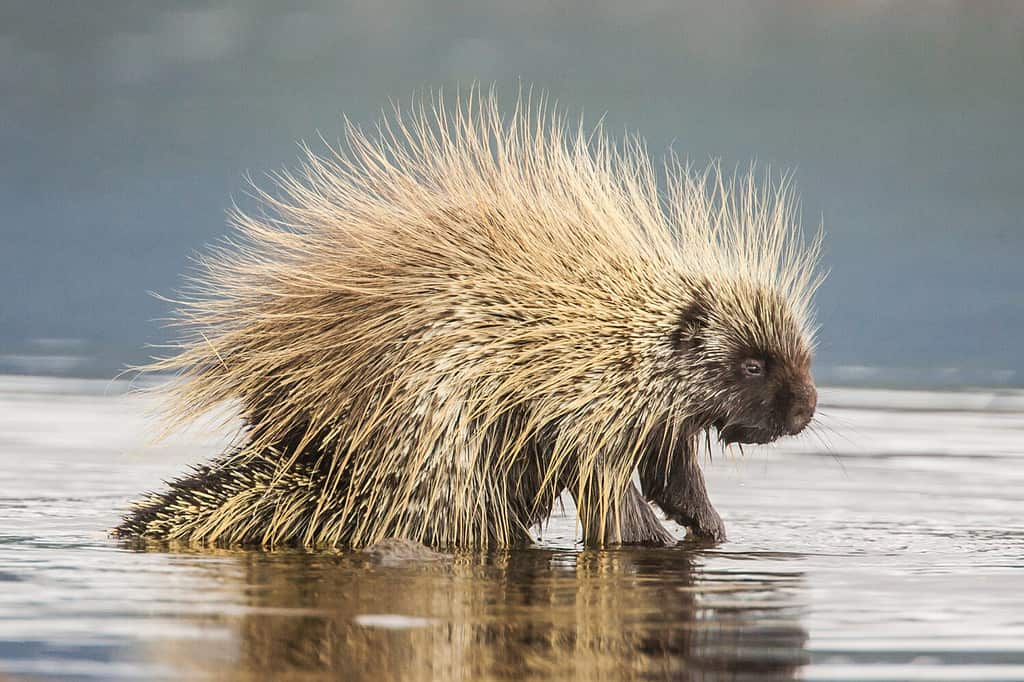
Quills in porcupines are more like hairs. Once they detach from the body, the animal starts to grow another in two days to replace the lost quills.
©Jukka Jantunen/Shutterstock.com
An adult porcupine, at any given time, has about 30,000 quills on its body. One interesting fact about these quills is that they are easily detachable. Once they come in contact with predators, they remove easily from the porcupine. It allows the porcupine to easily escape without being held to the predator by its quills.
To account for this ease, porcupines can grow new quills. Quills in porcupines are more like hairs. Once they detach from the body, the animal starts to grow another in two days to replace the lost quills. This way, porcupines never run out of quills to protect themselves.
9. Female Porcupines use Sexual Toys

Female porcupines have sounds that they make when calling out to male porcupines.
©iStock.com/Carol Gray
The female porcupine’s sexual habit is also full of incredible acts and facts. They are among the few animals in the mammal world using various objects as sexual tools. Female porcupines can use sticks, twigs, and other objects to stimulate their sexual organs.
That is one of the behaviors that become apparent during the mating season. They also have sounds that they make when calling out to male porcupines. In the wild, various male porcupines often fight in response to the female call.
10. Porcupines are Blind but Have Good Ears
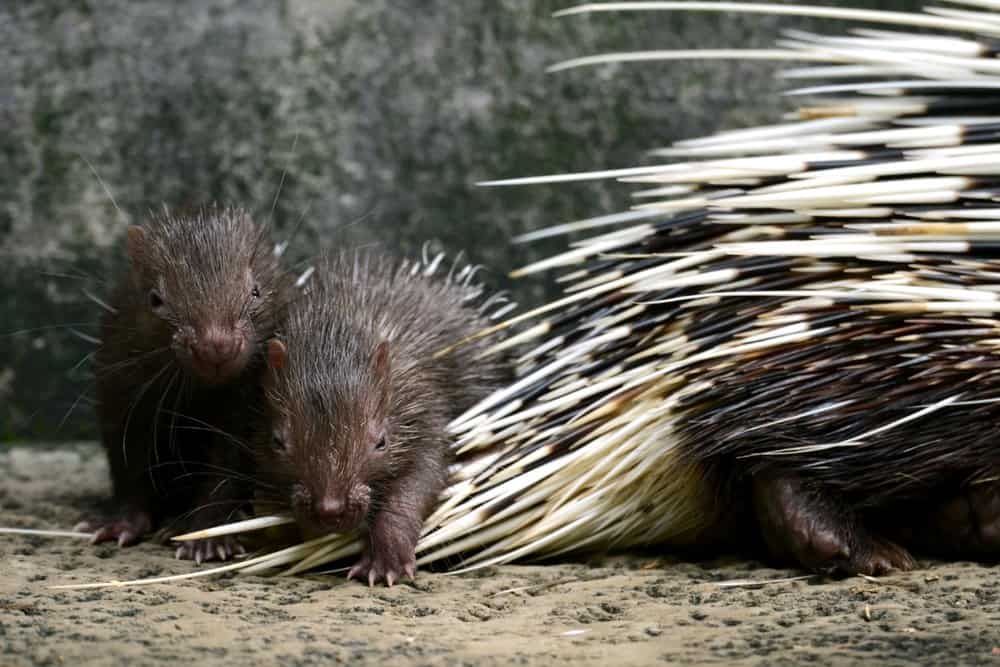
To compensate for their poor sight, porcupines have well-developed ears.
©dangdumrong/Shutterstock.com
A predator that can move ever so silently will find it easy to catch a porcupine. That is because porcupines have poor eyesight. It is perhaps one of the reasons why they are nocturnal animals. They always remain hidden during the day. However, to compensate for their poor sight, they have well-developed ears.
Their hearing powers are essential if they are to remain alert. Their common predators like to hunt in silence. These predators include snakes, hawks, and leopards. Their developed ears help to escape death.
The photo featured at the top of this post is © iStock.com/Pedro Ferreira do Amaral
Thank you for reading! Have some feedback for us? Contact the AZ Animals editorial team.






